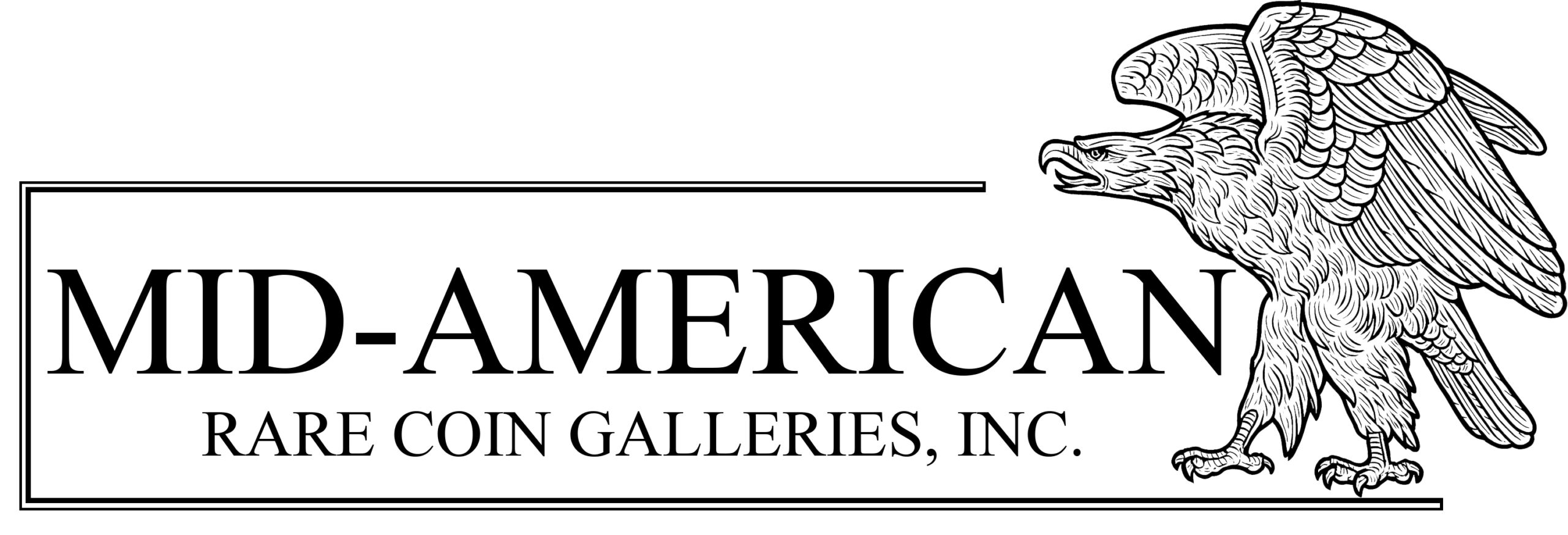During a recent visit to the vaults of the Smithsonian National Numismatic Collection (NNC), I ran across some amazing numismatic paraphernalia. One of the metal cabinets contains several shelves from the estate of Charles Barber, the Chief Engraver of the United States Mint from 1879 until his death in 1917. One drawer is nearly full of his engraving tools — the ones probably used to produce his classic series of coins now known as Barber Silver Coinage.
These are an amazing tangible link to one of the most important numismatic figures of the 19th and 20th centuries. The archive also includes hundreds of pages of historical documents from his storied career. The material was generously donated decades ago by the Stack family. Most of the archives have been digitized or copied over the years and are available to researchers from several sources.
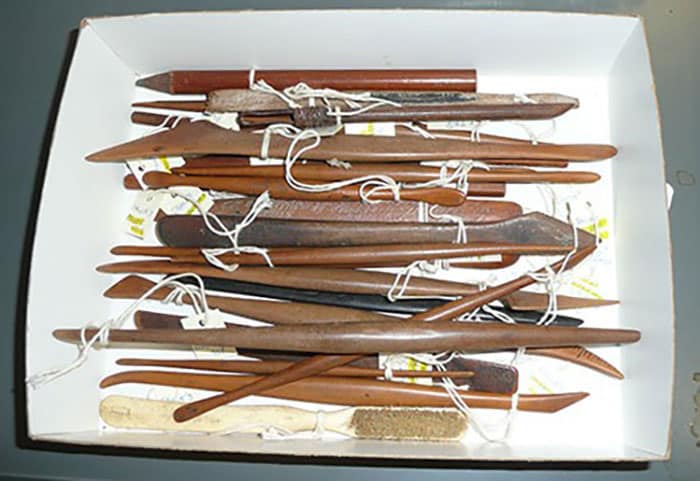
The Smithsonian National Numismatic Collection also contains the rarest Barber coins of all: the pattern coinage of 1891. There are seven coins, all of which are unique. They include:
1891 Pattern Dime J-1760 (nearly the adopted design)

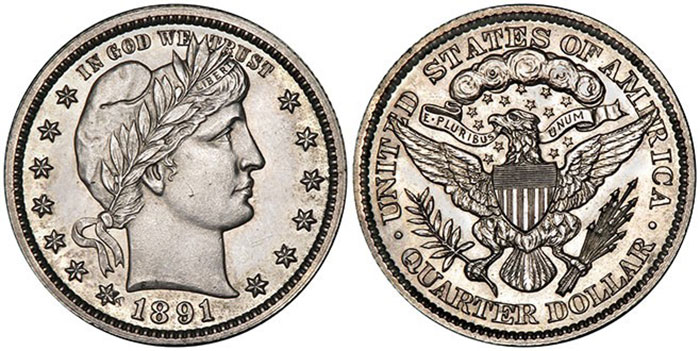
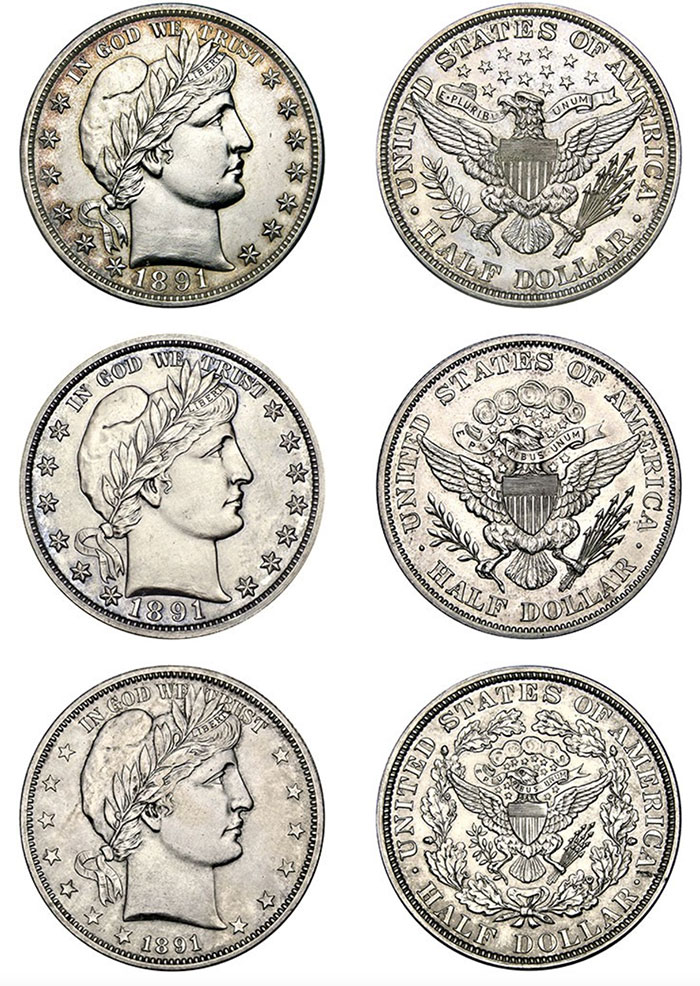
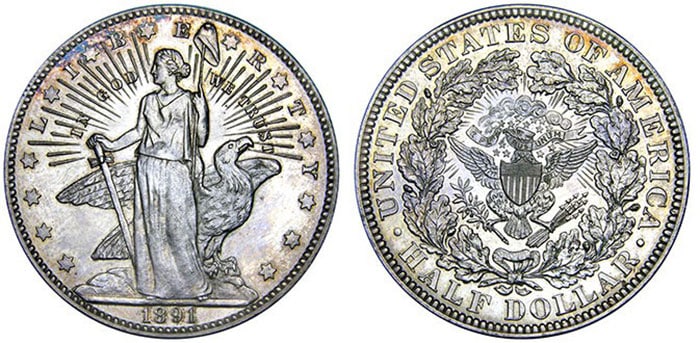
The coins became part of the Smithsonian collection when the United States Mint collection was transferred to the institution in 1923. Currently, none are on public display at the museum. The reverse designs for the half dollars are quite intriguing and a wonderful exercise in “what if” for Mint designs.
Production of Barber coinage began in 1892, during the height of the “Gilded Age”. The design was a replacement for Christian Gobrecht’s Seated Liberty design, which started production in 1836. After a somewhat long and unsuccessful design competition by Mint Director Edward O. Leach, Chief Engraver of the Mint Charles Barber was chosen to design the new coinage. The US Mint’s offer of $500 for the winning design was rejected by most of the leading sculptors of the day.
Barber’s coinage became the “monetary engine” of the day and saw extensive circulation over the course of the next 24 years. As the US economy grew by leaps and bounds, the silver coinage of Charles Barber was there to meet the need. The vast majority of Barber coinage remaining today is well worn and a testament to their utilitarian usage in the past.
Barber’s coinage was introduced at the same time as the World’s Columbian Exposition in Chicago (1892-1893). The debut of the new coinage during this Exposition of Progress must must have caused quite a sensation.
The fair was failing until the introduction of the Ferris wheel in 1893. Attendance surged and the author notes that on opening day, the ticket booths were filled to the knees with half dollars. One can only imagine the numismatic treasures, including freshly minted Barber half dollars, that filled those booths!
How to Start Collecting Barber Coins
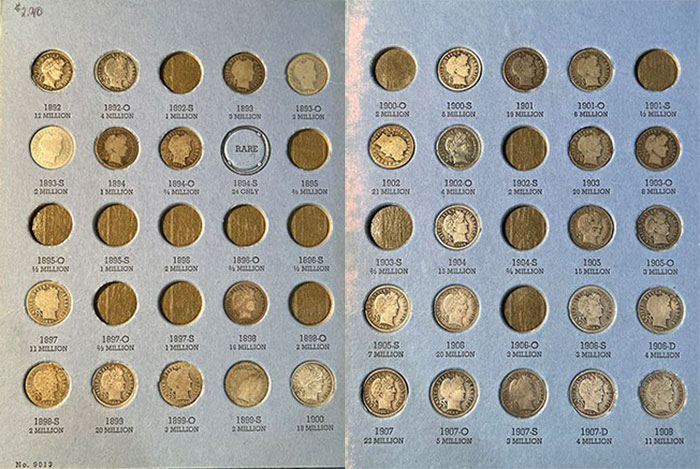
One of the frequent negative comments my articles receive is that the average collector cannot afford the subject being discussed. That is not an issue with Barber coinage.
There is a multitude of ways to collect Barber coinage, many of which are extremely affordable. The above photo was taken at a recent convention and is a Barber dime set that the owner had assembled by going through bags of 90% silver. At the current spot silver rate, this would translate to a cost of about $2 each.
The set was on display at the booth of the Barber Coin Collectors’ Society to illustrate the affordability of collecting Barber coinage. A similar result could be achieved by going through bags of 90% quarters and half dollars. You would eventually have to pay considerably more for the many semi-key and key dates, but you could get a tremendous jump start for a bargain.
The Barber dime series is the most affordable collection to complete in the lower circulated grades. The retail price for a set in Good to Very Good is about $2,000. The set is void of the really tough issues that are found in the Barber quarter set. A complete set of Barber quarters in Good to Very Good will set you back about $10,000. This is mostly because of the three really tough issues: the 1896-S, the 1901-S, and the 1913-S. The Barber half dollar set can be completed in a similar grade for around $3,500.
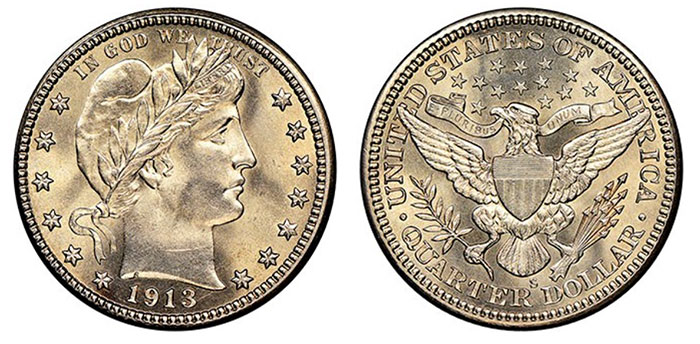
Moving up the affordability ladder would be assembling higher-grade circulated Barber coinage sets. This becomes much more challenging the higher the grade. Below is a chart of the estimated prices for sets in various grades:

A large percentage of circulated coins have problems that would disqualify them from being “straight graded”, such as cleaning, scratches, stains, and porosity. For resale purposes, you should try finding certified coins with the highest degree of eye appeal. Quality is just as important for circulated coins as for Uncirculated coins.
The ultimate strategy for collecting circulated Barber coinage is the “Every Man” set. This is a set in the highest possible grade less than Mint State. Coins designated as AU 58+ are the pinnacle of success when searching for coins to compete in the set-registry competition. Because the demand and competition for these coins is so strong, AU 58 coins often sell for more than MS 63 examples at auction. This seems illogical, but the pride of being in the top echelons of the registry drives collectors to adopt a “money is no object” mentality.
Collecting Mint State Barber Coinage
Tackling any of the Barber denominations by date and mintmark in Mint condition is a long and expensive road. The sets are full of rare coins in Mint State, with some being extremely rare in higher states of preservation. The purpose of this article is not to present a date-by-date analysis, which would be a monumental chore.
For that information, I highly recommend A Guide Book of Barber Silver Coins by Q. David Bowers. The book is nearly 400 pages long and gives detailed rarity and variety information. It also features the usual Bowers historical background that gives context to the events happening when these coins were struck.
For anyone who accepts this challenge, I would give a few words of advice:
Focus on Quality
Silver coins from this era are often darkly toned and unattractive. Buy the best-looking you can afford as these will be the best investments over time.
Do Your Homework
Be prepared to make a purchase when the right coin comes along. Study auction records and pop reports. Plus, consult with experts.
Any discussion of Mint State Barber coinage should include mention of the amazing collection assembled by Louis Eliasberg and sold by Bowers and Merena in the 1990s. Many of the finest-known examples for many dates and mintmarks came from this source. The quality is understandable as most of the Eliasberg silver coins came from the George H. Clapp collection. Clapp purchased many of the coins directly from the US Mint at the time of issue. The collection was a virtual time capsule of amazing coins. Interestingly, an 1893 publication by Augustus G. Heaton pointed out the collectability of coins by mintmark. Before his work, collectors ignored mintmarks, including the United States Mint collection. George H. Clapp was ahead of his time.
For those wanting to avoid the years of work needed to assemble a date-and-mintmark set of uncirculated Barber coinage, I would suggest a Type coin for each denomination in the best quality you can afford. When Barber coinage was released in 1892, many were saved. I have seen absolutely amazing examples of 1892 Barber dimes, quarters, and half dollars over the years — often in matching sets. The retail price for MS examples is actually quite affordable and a bargain in my opinion.
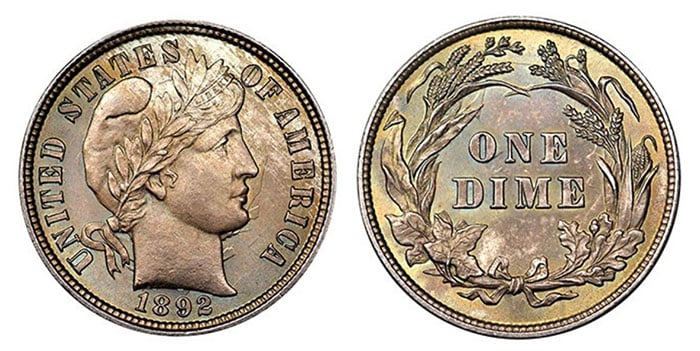
Collecting Proof Barber Coinage
Collecting Proof Barber coins by date is actually a much easier task. Most coins have mintages of around 1,000 or less but can be found with regularity. The coins also sell for much less now than prices 25 to 30 years ago. I think high-quality Proof Barber coinage is one the biggest bargains in all of numismatics. Again, focus on finding coins with good eye appeal. Avoid darkly toned coins as these will be hard to sell in the future. Cameo and Ultra Cameo coins bring substantial premiums.
Mega Rarity
No mention of Barber coinage would be complete without mentioning the 1894-S Barber dime. As mentioned above, Barber coins can be collected with a modest budget. There is one coin, however, for the super-rich collectors. The last example sold for almost $1.5 million at auction. The following is the story about this coin as described in my book, 100 Greatest US Coins:
“The 1894-S dime is one of the most famous U.S. rarities. While several coins are rarer or more valuable than the 1894-S dime, few come with the wonderful stories and intrigue that surround this coin.
“The consensus is that 24 1894-S dimes were struck. Early explanations of the mintage figure claimed that the 24 coins were made to round out an accounting entry. However, the figure needed was $.40, not $2.40, and the fact that most surviving 1894-S dimes are prooflike in appearance tends to refute that theory—such special coins would never have been necessary to accomplish such a mundane task. In recent years, there has been a debate whether the known coins are indeed merely prooflike (with mirror surfaces, but not struck from Proof dies) or actual Proofs. In our opinion, the highest-grade coins known for the issue appear to be Proofs. It should also be mentioned that it is only about this time that collecting coins by mintmark became fashionable.
“Later research revealed that the Mint superintendent at San Francisco in 1894, John Daggett, had the coins struck at the special request of banker friends. Three of the 24 coins went to his young daughter, Hallie, whom he instructed to preserve carefully until she was older, at which time the coins would be worth a lot of money. Being a typical child, Hallie immediately used one of the 1894-S dimes to purchase ice cream (thankfully, the coin was later recovered from circulation). However, Hallie clung to the other two, and 60 years later, in 1954, she sold her remaining pair to a California dealer.
“No other Barber coin (Dime, Quarter, or Half Dollar) comes even remotely close to the rarity of the 1894-S dime. Of the original 24 1894-S dimes, only nine have been positively traced. Two were pulled from circulation (one of them now known appropriately as the ‘Ice Cream Specimen’), while the others are Proof or Prooflike coins in varying degrees of preservation, ranging from impaired to gem. This raises the tantalizing question, ‘Where are the remaining 1894-S dimes?’ One would think that other examples would have surfaced with all the publicity surrounding this coin, not to mention the ever-increasing value of this rarity. However, such has not been the case. The remainder of the coins struck were probably lost or re-melted at some point. The discovery of a new example would be truly exciting news.”
John Daggett was right: The 1894-S Dime has become a very valuable coin!
Barber coinage has a lot to offer, and once you start, you will probably get hooked. If your budget is limited, consider this series for its collectability and historical importance. As can be seen from the above illustrations, the series offers a challenge for anyone interested in numismatics.
